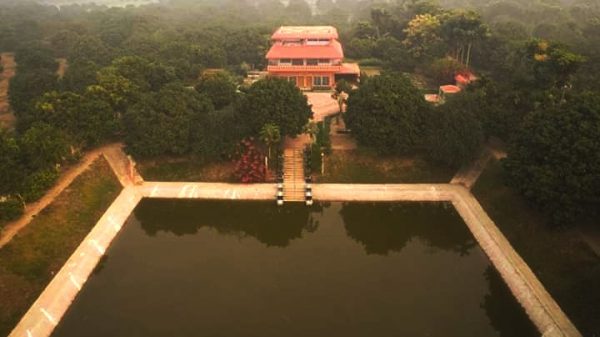Lessons from Nepal’s landslides

by Mohammad Abu Toyab :
A TEAM of Bangladeshi development professionals recently visited Nepal to study its disaster risk management strategies, particularly in managing landslide risks through anticipatory action. The aim was to identify best practices, understand effective risk communication, and enhance the capacity to implement anticipatory measures in a Bangladeshi context.
Nepal, situated in the central Himalayas, faces multiple hazards due to its unique climate and topography. It has five climatic zones which contribute to hazards like landslides, flash floods, glacial lake outbursts, and avalanches. The country experiences landslides triggered primarily by heavy rainfall and ground movements such as rock-falls, debris flows, and slope failures. Between 1972 and 2024, over 5,875 lives were lost in 40,069 landslide events. Unlike Bangladesh, where landslides are less frequent, more than 90 per cent of landslides in Nepal occur during the monsoon season between June and September. Despite these challenges, Nepal has made significant strides in mitigating landslide risks by embedding anticipatory action in disaster management.
Early warning system
NEPAL’S department of hydrology and meteorology provides round-the-clock forecasting and early warning services during the monsoon season. Using data from 281 automated weather stations, the department disseminates warnings through multiple communication channels, including email, SMS, dashboards, interactive voice response, and messaging platforms. A standout feature of their system is the use of two-way IVR to foster trust in forecasts and the circulation of 20 million early warning SMS to vulnerable communities. Additionally, DHM’s website offers three-day forecasts, including impact-based forecasting, which helps communities prepare for specific risks.
As a member of the World Meteorological Organisation, DHM contributes to global meteorological data sharing and participates in international programmes like UNESCO’s international hydrological programme. Nepal’s integrated and holistic approach ensures that at-risk populations receive timely alerts, understand them, and act on them effectively.
Anticipatory action
NEPAL’S policy framework reflects its commitment to anticipatory action. Following the 2015 earthquake, the country enacted the disaster risk reduction and management act of 2017, replacing the outdated natural calamity relief act of 1982. The new legislation assigns responsibilities for preparedness, early action, rescue, and rehabilitation across federal and provincial governments. The national disaster risk reduction policy of 2018 and the national DRR strategic action plan (2018-2030) focus on empowering local authorities and communities to mitigate disaster risks.
Financial mechanisms, such as the national disaster risk financing strategy of 2020, ensure timely resource allocation during disasters. Additionally, the national climate change policy of 2019 highlights the importance of early warning systems that combine indigenous knowledge with modern, eco-friendly methods. Nepal’s ‘one-door system’ for cash distribution further strengthens anticipatory action by streamlining financial assistance.
Disaster education
NEPAL has embraced technology to enhance disaster preparedness. For instance, the government uses virtual reality to educate students about landslide risks. Through immersive VR sessions, students experience realistic disaster simulations, gaining a 360-degree perspective of hazards. These workshops have made complex topics like landslide adaptation strategies more accessible and engaging. More than 500 students have participated in such initiatives, which exemplify how technology can transform disaster education in risk-prone areas.
Stakeholder integration
Nepal’s approach to disaster management involves multiple stakeholders, from federal agencies to local NGOs. The ministry of home affairs and the national disaster risk reduction and management authority play key roles in coordinating early warning systems, policy implementation, and fund mobilisation. Development partners contribute to anticipatory action by enhancing early warning systems and providing cash transfers, such as child grants, to vulnerable populations. Platforms like the national dialogue on anticipatory action and the asia dialogue platform facilitate knowledge sharing and innovation among stakeholders.
Comprehensive landslide inventories
Landslide inventories are crucial for understanding and mitigating risks. Nepal has compiled extensive inventories since the 1980s, documenting the location, characteristics, and timing of landslides. These records support susceptibility modelling, inform policies, and enable proactive measures in vulnerable areas. Openly accessible inventories also foster research and improve mitigation strategies. Nepal is now exploring advanced technologies, including machine learning, to enhance landslide inventory systems.
Implications for Bangladesh
While Bangladesh has made commendable progress in managing floods and cyclones, landslides remain a relatively overlooked hazard. However, the country’s vulnerability to landslides is increasing, particularly in hilly areas where human activities exacerbate risks. Bangladesh can learn from Nepal’s experiences by integrating anticipatory action into its national disaster management policies.
By adopting holistic early warning systems, leveraging technology for education, embedding anticipatory action in policies, and fostering stakeholder collaboration, Bangladesh can enhance its disaster preparedness and resilience. These efforts will not only address landslide risks but also contribute to achieving the Sustainable Development Goals.
Mohammad Abu Toyab is a development professional.























Leave a Reply